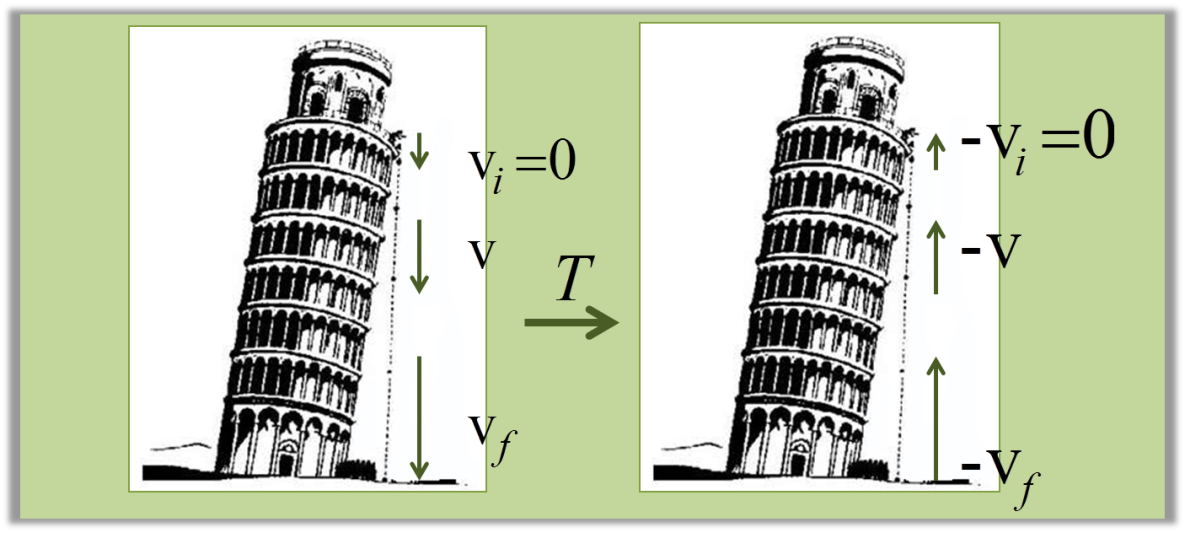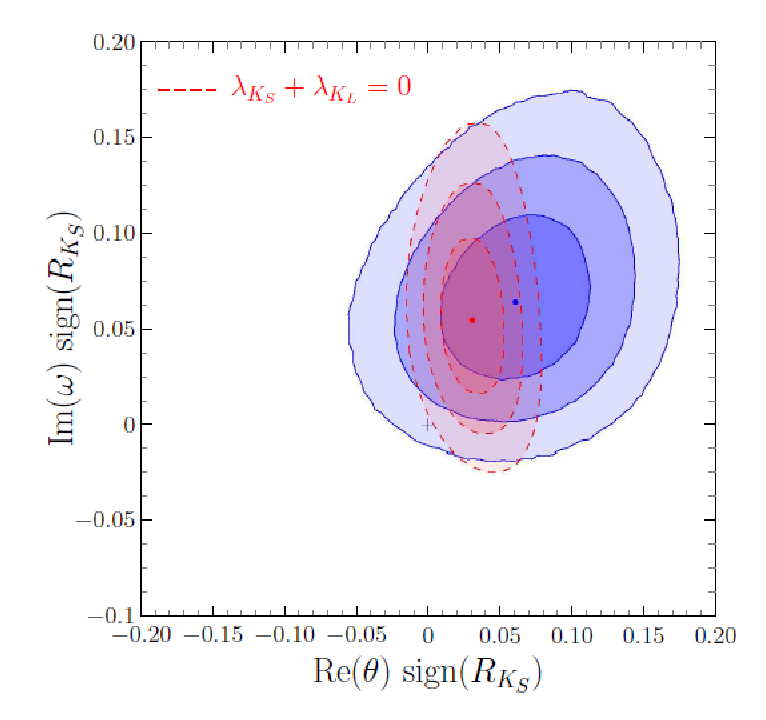The CPT symmetry, in the eye of the storm
Symmetries, broken or not, are manifest around us in geometric forms, materials or living bodies. In Physics we are interested in the Symmetries of the Laws of Nature, which have played a central role in the development of our understanding of the physical world. It is a well known fact that if the dynamical laws remain invariant during a transformation of the physical magnitudes under certain operation, such invariance can point to conserved observables. In this way we understand the conservation of linear momentum through invariance under space translations, the conservation of angular momentum through invariance under rotations and the conservation of energy through invariance under time translations. The transformations can be in space-time, like these that we have just mentioned, but they can also act upon internal degrees of freedom, such as gauge transformations, which lead to the conservation of charge.
While in the past symmetries allowed the discovery of regularities and order in natural phenomena when the dynamics at play was still unknown, the final third of the 20th century brought a conceptual revolution in which the interactions themselves arose as a consequence of the requirement of certain local symmetries. Sometimes these symmetries were internal, as in the case of the electromagnetic, weak and strong interactions, but for Einstein’s theory of gravitation part of the relevant symmetries refer to space-time. Symmetry, as an ingredient, has been central in the development of the Standard Model of Particle Physics, whose experimental success in the last decades has been spectacular.
Even more important than symmetries themselves is the existence of mechanisms that allow to break them following a well-defined pattern. The apparent contradiction between the precise agreement of the Standard Model with the experimental results and the fact that the underlying symmetry is only exact for massless particles (which is obviously not the case), calls for a very subtle mechanism of symmetry breaking, capable of generating masses without modifying the interaction dynamics. The Brout-Englert-Higgs mechanism to find asymmetric physical solutions to an initially symmetric theory does the job, and leaves as a signal the existence of the Higgs Boson, discovered by the ATLAS and CMS experiments at CERN in 2012.
 The discrete space-time symmetries, such as parity (P) and time reversal (T), together with the internal transformation of particle-antiparticle conjugation (C), appear to be exact in processes where all the relevant interactions are strong and electromagnetic. Nevertheless, all three P, T, and C, are broken in phenomena involving the weak interactions, such as the instability and decay of some particles and atomic nuclei, and some of the nuclear fusion processes in stars, including our Sun.
The discrete space-time symmetries, such as parity (P) and time reversal (T), together with the internal transformation of particle-antiparticle conjugation (C), appear to be exact in processes where all the relevant interactions are strong and electromagnetic. Nevertheless, all three P, T, and C, are broken in phenomena involving the weak interactions, such as the instability and decay of some particles and atomic nuclei, and some of the nuclear fusion processes in stars, including our Sun.
The violation of P was first observed in nuclear β decays, while those of C and P (separately) were spotted in pion decays in the 1950’s. The violation of CP came unexpectedly in 1964 in the decay of neutral kaons, and it was observed again in B mesons in 2001. Direct proof that T is also violated had to wait until 2012, when it was measured using the entanglement of neutral B mesons. In the Standard Model these symmetry breaking patterns are described as a consequence of two very different pieces of physics: for P and C, chirality plays a prominent role, as left- and right-handed fields transform in a different manner. For CP and T the focus is on the particle content of the theory, requiring at least three families of quarks and leptons to understand the nonconservation.
To this day, the only discrete symmetry that remains exact is the combination CPT. The CPT Theorem, proved during the 1950’s, establishes that a quantum field theory describing interactions in a flat space-time and verifying these three conditions: i) being Lorentz-invariant, ii) including only local interactions, and iii) having unitary time-evolution, is necessarily invariant under the CPT symmetry transformation. Currently the best limits are derived from the mass difference between particle and antiparticle, measured for the pairs K0 – K̅0 (at CPLEAR), B0 – B̅0 (at BABAR) and p – p̅ (at ASACUSA).
In theories in which any of these conditions is not fulfilled, for instance if Lorentz symmetry is violated or if there are nonlocal interactions, non-invariance under CPT transformations is possible. In neutral meson systems this phenomenon is parameterised via a complex θ appearing in the mass matrix. Another mechanism which can cause CPT symmetry breaking is that the CPT operator itself is ill-defined, as happens in certain quantum gravity theories that predict a foam structure for the space-time. In a recent work, researchers from IFIC, in collaboration with colleagues from King’s College–London and IST–Lisbon, have found that the perturbative treatment of this latter mechanism leads [1] to a modification of the quantum correlations in neutral meson systems and introduces an entanglement weakening component with the “wrong” exchange symmetry. This effect is parameterised by another complex quantity, ω, which, if nonzero, leads to an unmistakable experimental signal [2]. In particular, in B0 – B̅0 systems one should observe that the double decay rates into the channels “well-defined-flavour and then well-defined-CP” and “well-defined-CP and then well-defined-flavour” (differing in the time ordering of the final states), are no longer related through exchange-symmetry arguments [3].
 The BABAR experiment has measured the eight decay rates relevant for the determination of the ω parameter: those resulting from the combination in the final states of the two possible flavours for the lepton ℓ±, the two possible CP-defined hadronic states, J/ψ KS and J/ψ KL, and the two possible time orderings. The analysis of [2] found a value for Im(ω) that differs from zero at around 2σ. Besides, this effect is independent of a possible CPT violation due to the real part of the θ parameter, which is also found to be non-zero at the 2σ level. In fact, if the analysis is repeated assuming ω = 0 and considering separate genuine asymmetries for T, CP and CPT the value obtained for θ does not differ from the previous case [3].
The BABAR experiment has measured the eight decay rates relevant for the determination of the ω parameter: those resulting from the combination in the final states of the two possible flavours for the lepton ℓ±, the two possible CP-defined hadronic states, J/ψ KS and J/ψ KL, and the two possible time orderings. The analysis of [2] found a value for Im(ω) that differs from zero at around 2σ. Besides, this effect is independent of a possible CPT violation due to the real part of the θ parameter, which is also found to be non-zero at the 2σ level. In fact, if the analysis is repeated assuming ω = 0 and considering separate genuine asymmetries for T, CP and CPT the value obtained for θ does not differ from the previous case [3].
The final results for both types of CPT breaking are summarised in the figure, which shows Im(ω) versus Re(θ). A conservative approach, given the statistical significance of the present measurement, would suggest interpreting these results as upper bounds for the values of ω and θ. In any case, the hint at one of them, or both, being nonzero, and thus CPT being violated, adds a positive expectation to the results that are coming in a few years from BELLE-II for B mesons and KLOE-2 for K mesons. The breaking of CPT symmetry would trigger a paradigm change in fundamental physics, as it would suggest that quantum field theory as we understand it needs to be entirely reconsidered.
[1] "Novel type of CPT violation for correlated EPR states", J. Bernabéu, N.E. Mavromatos, J. Papavassiliou. Phys.Rev.Lett. 92 (2004) 131601
[2] "The signal of ill-defined CPT weakening entanglement in the Bd system", J. Bernabéu, F.J. Botella, N.E. Mavromatos, M. Nebot. arXiv:1612.05652
[3] "Genuine T, CP, CPT asymmetry parameters for the entangled Bd system", J. Bernabéu, F.J. Botella, M. Nebot. JHEP 06 (2016) 100, arXiv:1605.03925
















